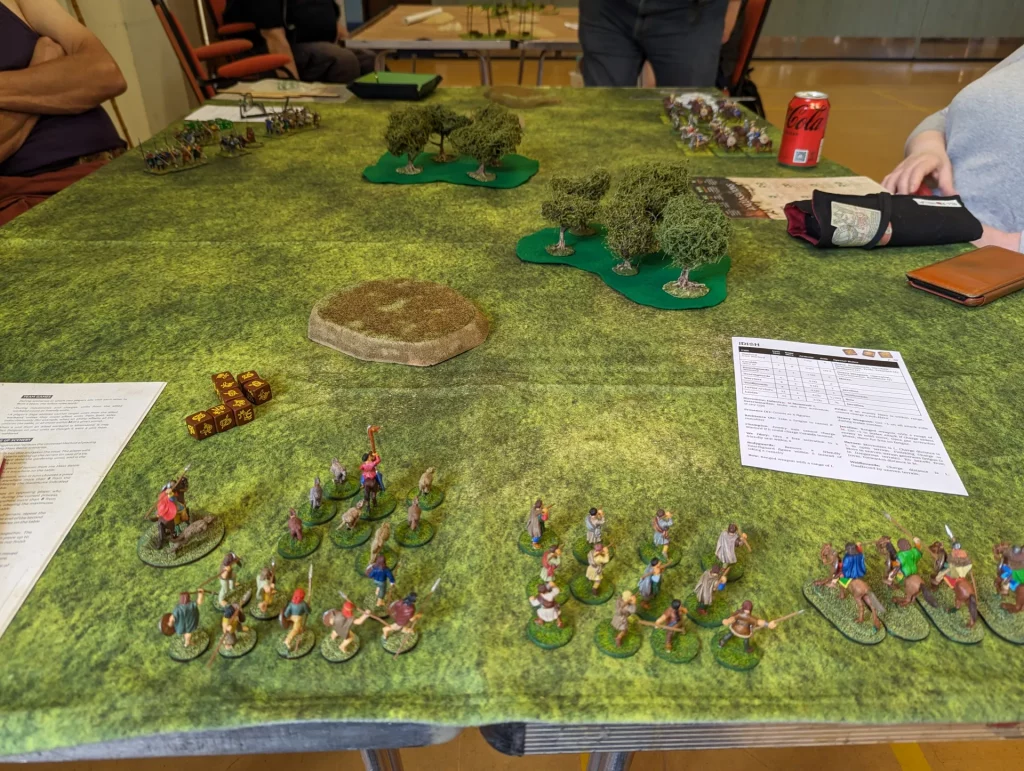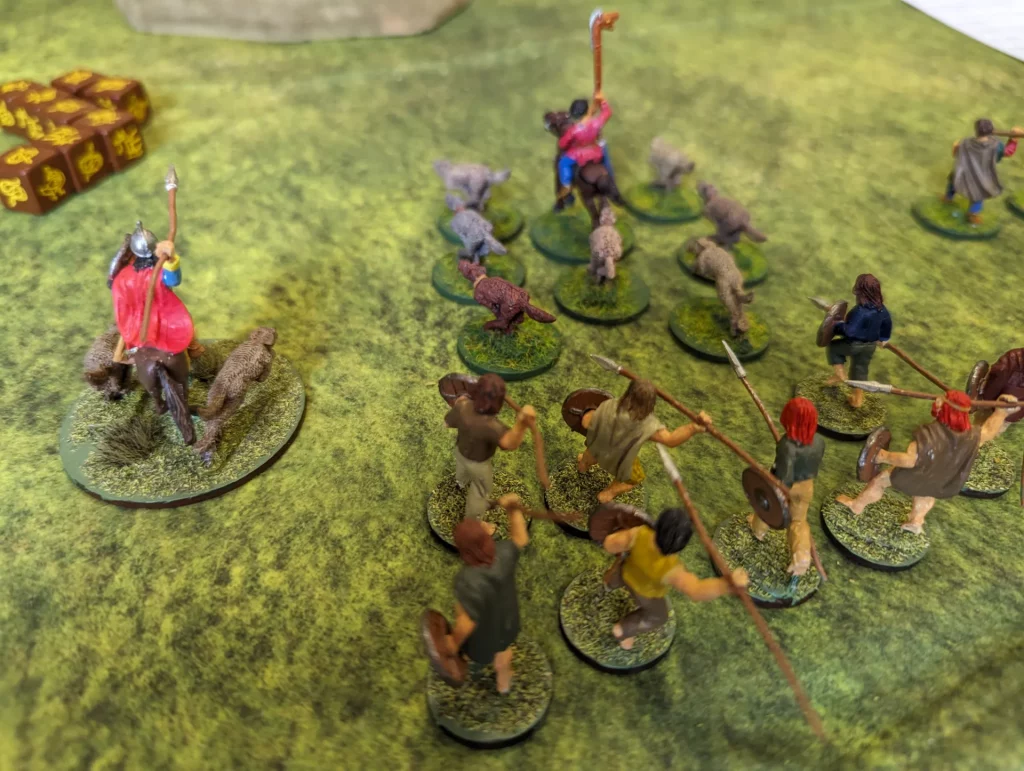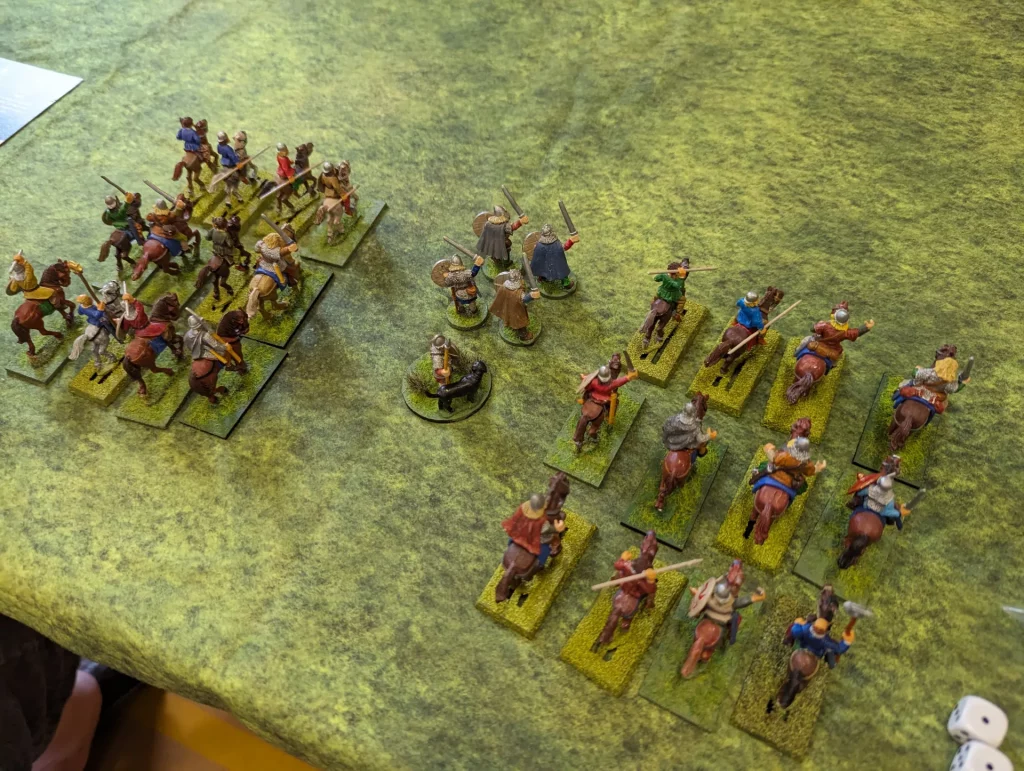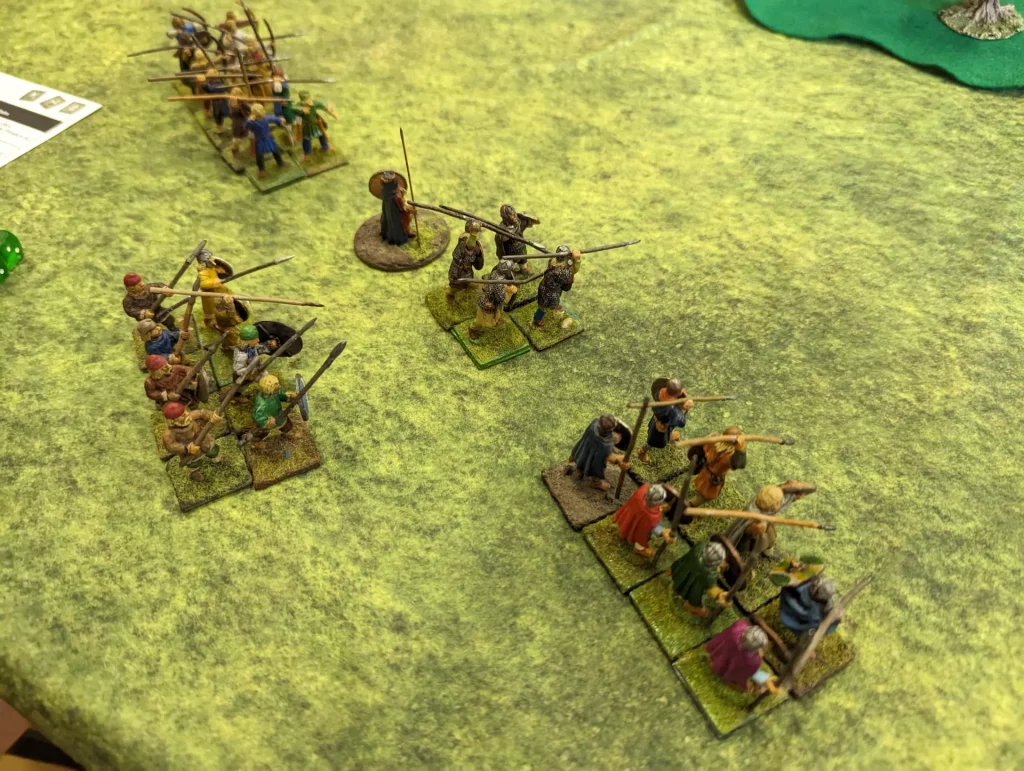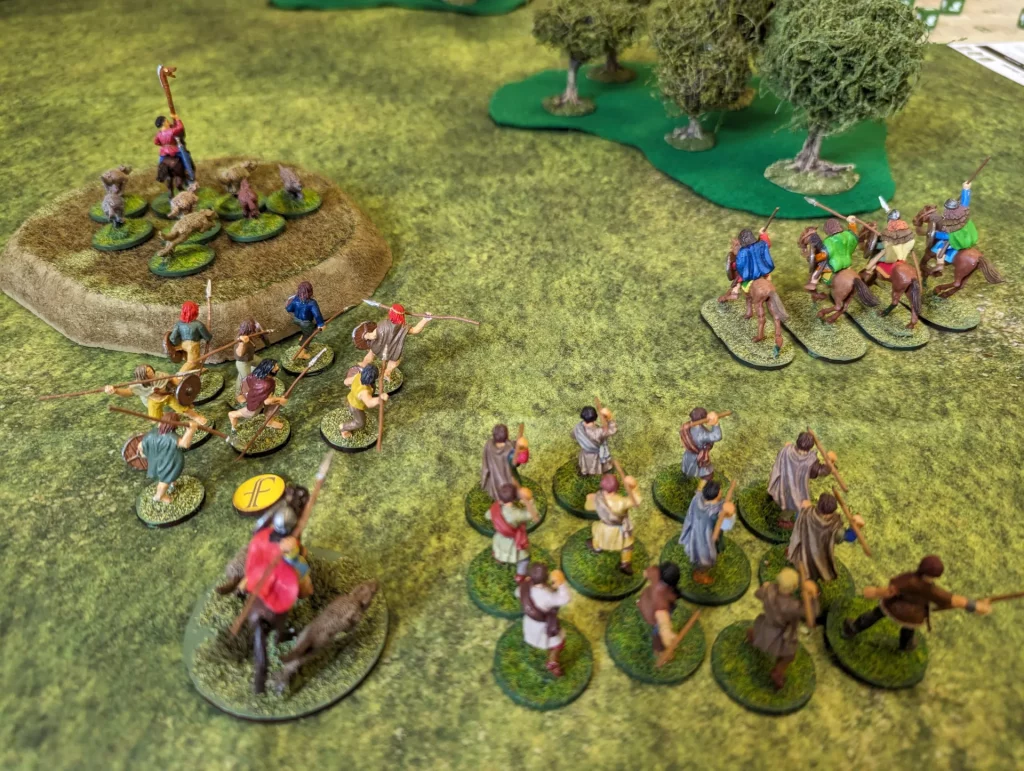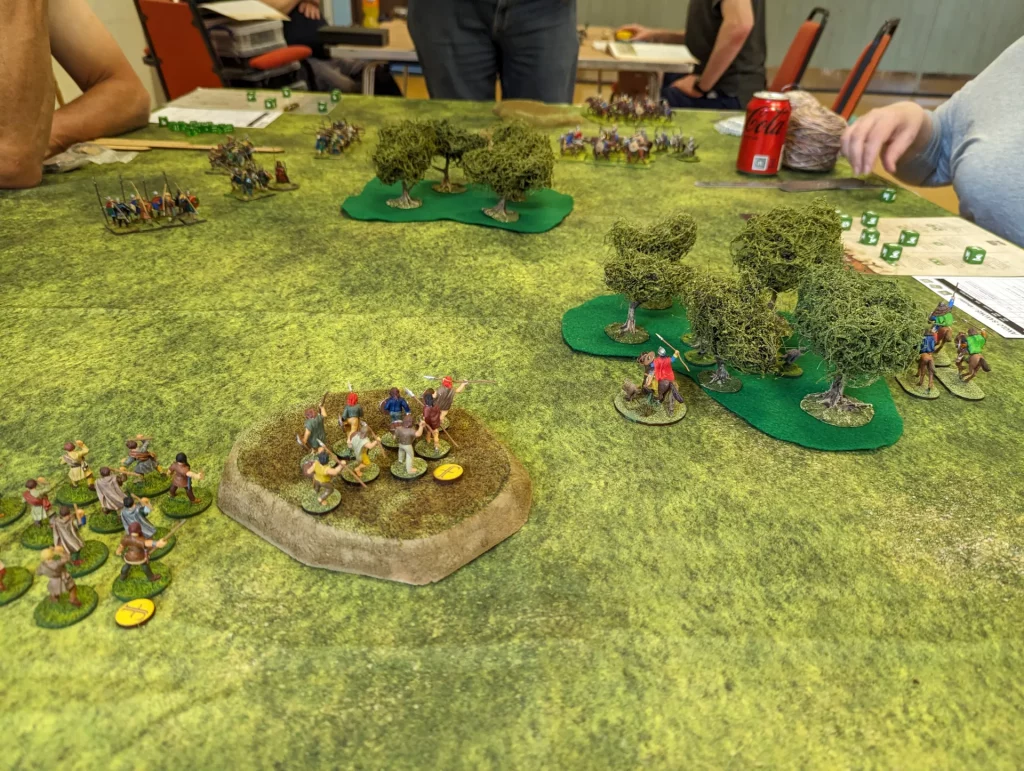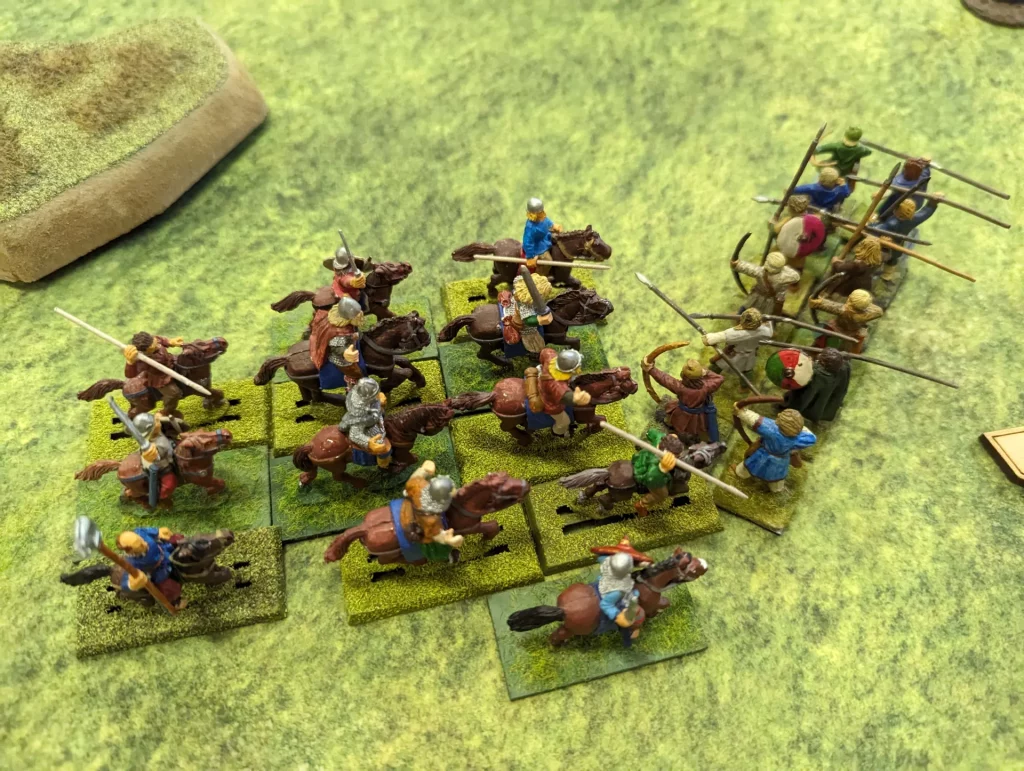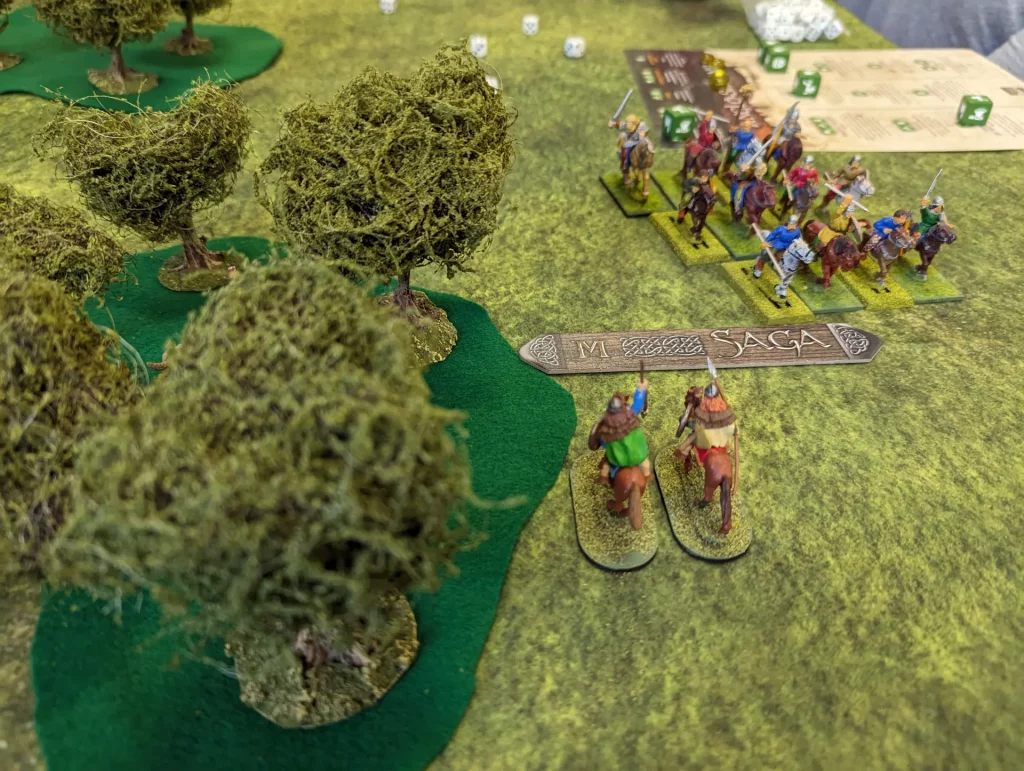Saxons, Saxons and Irish
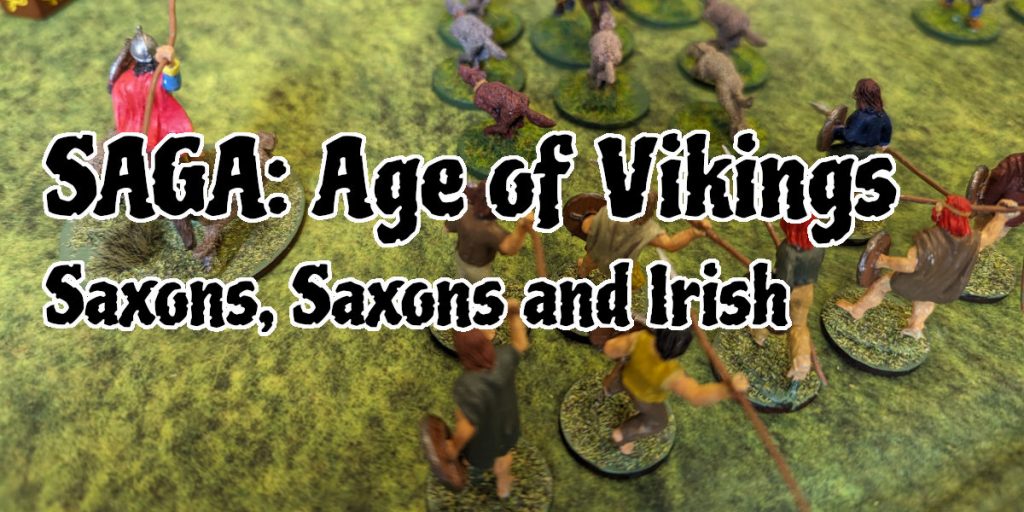
After a long break from Saga, we came back to a three player game. Originally, it was going to be two warbands of Saxons, and I was going to take the Jomsvikings. One of the players didn’t have quite enough figures for a full 6 point warband though, so we decided to cut it down to 4 points. Given that my Jomsvikings army has an expensive leader, I decided to switch to trying out the Irish for the first time.
So we had an Anglo Saxons warband of infantry, plus a second Anglo Saxon warband with mostly cavalry, led by King Athelstan. Given the ability of the mounted units to dominate a large battlefield, it mostly ended up being everyone against Athelstan. However, we didn’t know this was going to be the case at the start, so hadn’t made any plans to organise our tactics.
The ‘mass battle’ rules for Saga tend to assume four players. The battlefield is twice as big, but the terrain layout only had three players worth of terrain, giving us quite an empty playing area. This was not good for the Irish, and benefited the horse based saxons who had lots of big wide open areas.
I decided to take a unit of wolfhounds with my Irish, because of their increased charge distance. One thing I just realised that I did wrong is that the L movement of wolfhounds only applies to the charge, not to basic movement. It wasn’t the only mistake we made during the game.
It was also the first time that I got to use my new hills in actual play. I have three by this point – 25mm thick MDF filed to have slightly sloping edges and with flock and static grass on top. They are nicely portable, reasonably sturdy and seemed quite practical to use since they have nice flat tops for standing miniatures on.
The first turn consisted of everyone using manoeuvre activations to get into position. By the end of turn one, things were looking relatively safe for the Irish, with the two Saxon warbands moving towards each other. There were some Saxon infantry coming my way, but they would take some time getting to me. I had spent fatigue to move some of my lighter units forward, hoping to be able to make it to the woods.
Turn two opened with the Irish moving first. I want to move my mounted Fianna around the woods to come at the Saxon infantry from the flank, leaving my lighter troops as a tempting target to try and draw the Saxons out into the open.
At this point, it looked like the Saxons would be fighting each other, but then Athelstan decided to use Unison, activating two units at once. The first charged at a unit of Saxon levy, killing eight of them. The second unit of horse made an about turn and headed towards my Fianna. They didn’t charge them, but got within javelin range, killing two.
The Irish Fianna tried a counter-charge, but were wiped out. The saxons of Æthelflæd by this point were taking a lot of casualties, but were somehow holding on. Æthelflæd herself did a charge, and managed to drive the enemy saxons back, but at the cost of losing many bodyguards and becoming exhausted herself.
With the forces of Athelstan spread out, there was a gap down the middle of the battle field which was a potential opening for my chieftain and the war hounds. This is where me getting their movement wrong made a big difference, since without that mistake they wouldn’t have been able to reach Athelstan and make an attack.
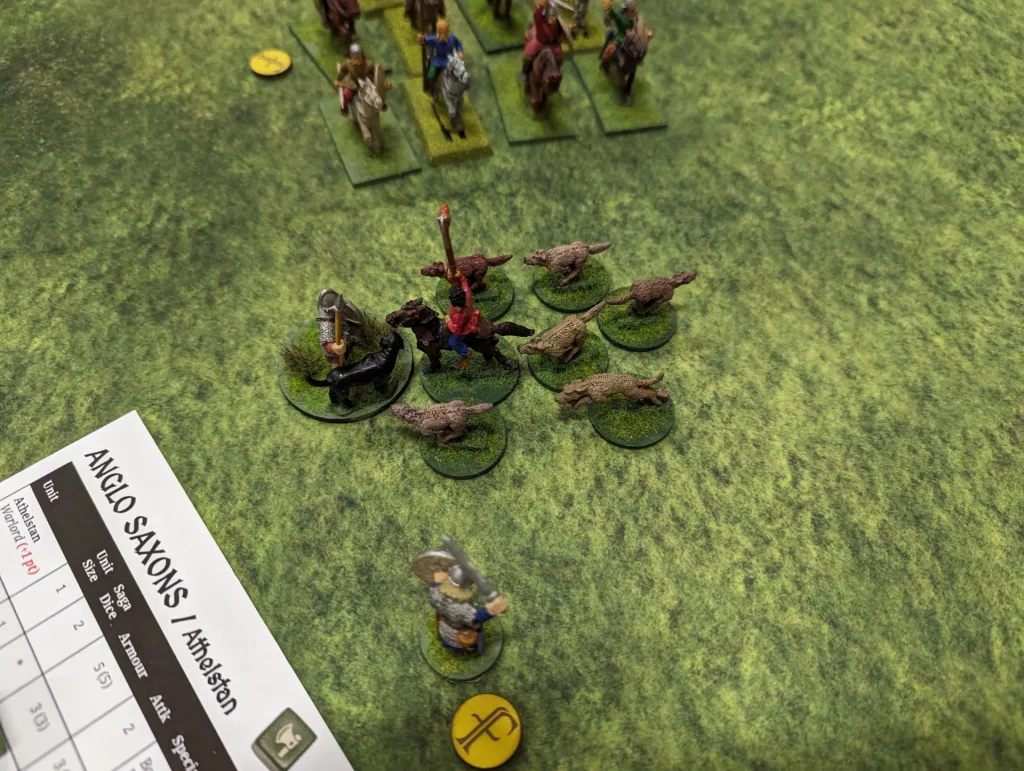
The Irish warlord himself also contributed,. Athelstan was left exhausted but alive. My war hounds were mostly untouched – they’d managed to save 7 out of 8 hits against them by the Saxon hearthguard.
Athelstan’s units managed to regroup though and counter attacked, killing the Irish warlord and wiping out the rest of the war hounds.
Meanwhile, the other Saxon horse unit was finishing off killing Æthelflæd and most of her retinue.
By the end of turn six, two warlords were dead and the Saxons under Athelstan had control of the field. There were still two untouched units of Irish who I hadn’t managed to do anything with. This gave me some much needed survival points, but the end result was a clear victory for Athelstan.
It was afterwards that we realised that Athelstan’s warband consisted of five points – three units of warriors (organised as two units of 12 each), a unit of hearthguard and Athelstan himself (who was an extra point).
Did it make a big difference? Athelstan ended up fighting two armies – apart from a single use of Son’s of Dana I hadn’t done anything to Æthelflæd’s army (who, by the way, was just a standard Saxon warlord, even if she had been given a name). Even though they had five points, they were fighting two four point armies.
The cavalry gave them a big advantage on a large battlefield, and Unison together with large units were used very effectively. The difference would have been either two smaller horse units, or losing the hearthguard. Without the hearthguard, Athelstan may have been killed (though without my mistake with the movement of the war hounds, he may not have come under as much threat). With smaller units, it would have taken longer to win the various fights, but I think ultimately it wouldn’t have greatly changed the end result.
Three player games of Saga seem to sit in an awkward middle ground between two and four players. Four point armies worked well, since we finished on time, but it may be better next time to try two against one for real. A couple of four point armies against an eight point army.
This would give the smaller armies the advantage of two free warlords, so maybe the larger army should be nine points, but that might be getting big for Saga. It definitely leaves lots of room for larger units, which can be very powerful.
Anyway, it was a fun game. Athelred did dominate for much of the game, but both the Irish and other Saxons did manage to make a decent stand.
Now I need to glue riders back onto their horses, fix some spears and think about re-basing some of the my Saxons – some currently use the ugly slotted Warhammer bases, and I think some oval bases would look better and more consistent.
